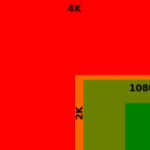How digital technology is reinventing cinema
 As of 2012, around 60% of all cinema screens worldwide have been converted from film to digital projectors. Over half of those digital screens are outfitted with stereoscopic (3D) projectors. By 2015, it is expected that almost every cinema screen will be digital and that film projection will all but die out.
As of 2012, around 60% of all cinema screens worldwide have been converted from film to digital projectors. Over half of those digital screens are outfitted with stereoscopic (3D) projectors. By 2015, it is expected that almost every cinema screen will be digital and that film projection will all but die out.
Digital cinema is a lot more than just a digital projector, however — ...
Filming
For the most part, movies are still predominantly shot using 35mm film stock. Cinematography is certainly moving towards digital cameras, but the legacy of film is so great — ...
Digital intermediate
The irony of using film cameras, though, is that they’re all scanned into a digital intermediate anyway. Almost every big film of the 2000s was converted from film to a 2K (~2048×1080) digital intermediate — ...
Distribution
In 40% of cases (conventional projection cinema screens), the digital intermediate is then transferred back onto film, and copies are made (at a cost of thousands of dollars each) for each cinema that will be screening the movie. For digital screening, the digital intermediate is exported as a digital master, which includes all of the video, sound, and data required to project the movie correctly.
Now we get onto the techie bit of digital cinema. Before distribution to cinemas, the digital master is encrypted and compressed into a Digital Cinema Package (DCP), which is a standard format defined by Digital Cinema Initiatives (a joint venture by the major movie studios). ...
Digital cinema servers
Once The Avengers DCP hard drive arrives at the cinema, it’s slotted into a digital cinema server (DCS). A DCS is basically a proprietary, rack-mounted computer that has a hot-swappable hard drive bay on the front, and a bunch of video/audio outputs on the back. There are many companies that produce DCSes, but Dolby (pictured below) and Sony are two of the frontrunners (and their systems run Linux!) ...
Digital projection
And finally we arrive at the bit that most consumers actually care about: digital projection. Because most digital intermediates over the last decade have been at 2K (2048×1080) resolution, a lot of cinemas are still outfitted with 2K projectors. With the emergence of 4K digital cameras from companies such as Red, and 4K projectors from the likes of Christie and Sony, 4K digital cinema is making inroads.
Digital projectors are beastly machines, with huge, 4-kilowatt xenon lamps that produce tens of thousands of lumens. Price-wise, these projectors — ...
The future of digital cinema
There is no doubt that cinema is moving away from film and towards digital — but is that a good thing? Digital distribution is undoubtedly more flexible than moving around bulky, costly film reels — but on the flip side, what about archiving? Properly-stored film stock can be archived for a hundred years, and ...
See the full story here: